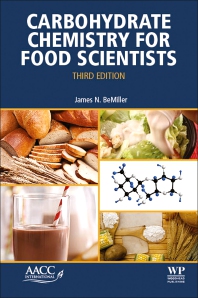Books in Carbohydrates
Books in Carbohydrates

Sprouted Grains
- 2nd Edition
- Hao Feng + 3 more
- English

Storage of Cereal Grains and Their Products
- 5th Edition
- Kurt A. Rosentrater
- English

Asian Noodle Manufacturing
- 1st Edition
- Gary G. Hou
- English

Applications of Genetic and Genomic Research in Cereals
- 1st Edition
- Thomas Miedaner + 1 more
- English

Corn
- 3rd Edition
- Sergio O. Serna-Saldivar
- English

Carbohydrate Chemistry for Food Scientists
- 3rd Edition
- James N. BeMiller
- English

Bioactive Polysaccharides
- 1st Edition
- Shaoping Nie + 2 more
- English

Stored-Product Insect Resource
- 1st Edition
- David Hagstrum + 1 more
- English

Gluten-Free Baked Products
- 1st Edition
- Jeffery L Casper + 1 more
- English

Wheat Flour
- 2nd Edition
- William A Atwell + 1 more
- English